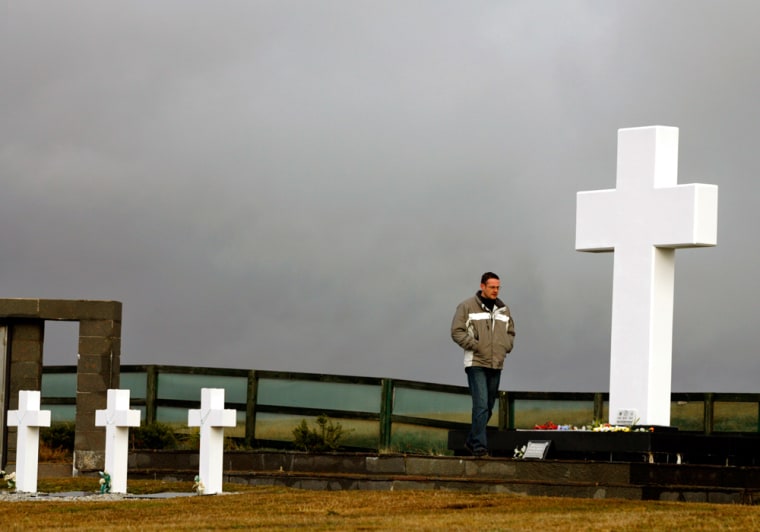Braving a biting wind in the remote Falkland Islands, tourists comb through trenches and battlefields from the British-Argentine war of 1982, finding weathered combat boots and tubes of toothpaste.
These visits to see the scene and contemplate the tragedy of war — 904 people died in 73 days after Argentina tried to reclaim the South American islands from Britain — have given a big boost to tourism in the Falklands.
Last year, 55,000 visitors came, 18 times the number of a decade ago and far more than the few thousand people who live on the islands.
Tourists, mostly from the United States, Britain and Canada, arrive on weekly flights from Chile or on Antarctic and other cruises, taking trips to see penguins and elephant seals.
Tour agencies also offer visits to cemeteries and battlefields, especially Mount Longdon and Mount Tumbledown, sites of some of the fiercest fighting.
“These two mountains, Longdon and Tumbledown, are the places everyone wants to see, walk through, to honor those who died in these mountains,” said Patrick Watts, a tour guide who lived on the islands during the war.
Tourism has become the second-biggest earner for the Falklands after fishing, said Liz Dimmlich, general director of the Tourism Office.
“It’s very interesting for people to see the battlefields and obviously the cemeteries, which are very moving,” said Dimmlich.
The Falklands are still scarred by the war 25 years ago. Even without a tour, visitors can easily see mine fields, bomb craters and crosses and flowers where soldiers fell.
Argentina continues to claim the islands, called Islas Malvinas in Spanish, but Britain has refused its requests to renew dialogue.
The Falklands are just 300 miles from the coast of Argentina and were claimed variously by Argentina, Britain, France and Spain until 1833, when Britain seized the territory from the Argentine settlers of the time. Most residents now are of British descent and identify with that culture.
‘It was hell’
Mount Longdon, which overlooks Stanley the capital, is surrounded by rough and muddy terrain. Dozens of soldiers from both sides fell at one of the last battles of the war.
“It was hell. We fought man to man,” Ernesto Alonso, a former Argentine fighter who was 19 at the time, said in Buenos Aires.
The steep, difficult mountainside explains why Longdon was chosen by the Argentines to defend Stanley.
For tourists taking photos, guides point out machine guns, field artillery, improvised cooking utensils, water buckets, thin-soled shoes and other debris strewn on the ground. Taking souvenirs is not allowed.
Many combatants from the Argentine side said after the war that, as they holed up in trenches and make-shift shelters to defend positions on Mount Longdon, they did not have enough food, equipment or cold-weather gear.
Tours include the Argentine cemetery in Darwin, where 230 white crosses mark graves, many without names. Veterans say some remains were buried together and that the cemetery really holds 234 dead.
In the town of Goose Green, near Darwin, visitors can see ”POW” painted on a big shed, visible still under fresher paint, where hundreds of Argentine prisoners of war were held.
Behind the sheds, in a typical Falklands scene mixing the war’s legacy with daily life, sheep graze in a mine field after somehow getting through the barbed wire fence.
